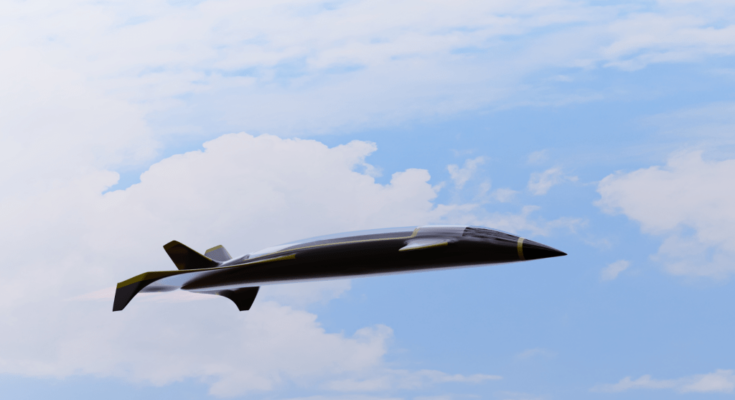China has reportedly achieved a major milestone in hypersonic aviation by successfully testing a prototype aircraft that reached an astounding speed of Mach 6.5, approximately 5,033 miles per hour. This technological feat represents a significant leap in aerospace engineering, positioning China as a leading player in the global race to develop hypersonic passenger and cargo aircraft. The test flight, which took place at the Jiuquan Satellite Launch Centre in the Gobi Desert, was conducted in August 2021, though details were only recently made public.
What Is Hypersonic Flight?
Hypersonic flight refers to speeds greater than Mach 5, or five times the speed of sound. At such velocities, an aircraft can travel between distant cities in a matter of minutes rather than hours. The technology has traditionally been reserved for military applications, such as ballistic missiles and experimental defense aircraft. However, China’s new prototype aims to revolutionize commercial aviation by creating a hypersonic aircraft capable of carrying passengers and cargo at unprecedented speeds.
Design and Engineering of the Hypersonic Jet
The Chinese hypersonic jet features a distinctive broad fuselage and cape-shaped wings, a design that enhances aerodynamics while maximizing internal space. This structure could allow the aircraft to accommodate a passenger or cargo capacity similar to that of conventional jumbo jets. Researchers claim that the aircraft’s shape reduces air resistance and stabilizes its flight at extremely high speeds, making it more efficient than previous hypersonic designs.
Another significant innovation is the aircraft’s propulsion system. To sustain speeds exceeding Mach 6, the prototype likely incorporates a combined-cycle engine, merging traditional jet turbine technology with a scramjet (supersonic combustion ramjet) engine. Scramjets operate without moving parts and rely on the aircraft’s high speed to compress incoming air, igniting fuel efficiently at hypersonic velocities. This technology allows the aircraft to achieve sustained high speeds while maintaining maneuverability and control.
Challenges of Hypersonic Aviation
Despite this remarkable achievement, the path to making hypersonic passenger flights a reality remains fraught with challenges. Cui Kai, the project leader, acknowledged that several critical hurdles must be overcome before a hypersonic jumbo jet can be commercialized.
- Extreme Heat and Materials: At hypersonic speeds, friction with the atmosphere generates enormous heat, reaching thousands of degrees Fahrenheit. This requires the use of advanced thermal-resistant materials capable of withstanding such extreme conditions without degrading.
- Fuel Efficiency and Power Source: Maintaining speeds above Mach 6 demands a highly efficient propulsion system with a reliable and sustainable fuel source. While scramjets offer a promising solution, refining their efficiency for prolonged use in commercial aviation remains a significant challenge.
- Structural Integrity and Stability: High-speed flight exerts immense pressure on an aircraft’s structure, necessitating rigorous engineering to prevent mechanical failures and ensure passenger safety.
- Regulatory and Safety Concerns: Hypersonic travel raises new regulatory challenges concerning air traffic management, noise pollution, and emergency response systems. International aviation authorities must establish guidelines to govern this emerging sector.
Implications for Global Travel and Military Applications
If China successfully overcomes these obstacles, hypersonic travel could transform global transportation. A journey that currently takes 12 hours, such as a flight from New York to Beijing, could be reduced to just two hours. Such a breakthrough would revolutionize industries reliant on rapid cargo deliveries and open up new possibilities for ultra-fast commercial air travel.
Beyond civilian applications, hypersonic aircraft also have significant military potential. High-speed reconnaissance, rapid-response strike capabilities, and advanced missile systems are areas where this technology could be game-changing. The United States, Russia, and other global powers are actively working on similar technologies, highlighting the competitive nature of hypersonic research and development.
China’s Growing Influence in Aerospace Innovation
China’s advancements in hypersonic technology align with its broader ambitions to become a leader in aerospace innovation. The country has made considerable progress in space exploration, satellite deployment, and military aviation, further solidifying its status as a dominant force in the field.
This latest hypersonic breakthrough signals China’s determination to push the boundaries of aviation and challenge the dominance of Western aerospace giants. Whether for commercial or military use, the successful development of a hypersonic jumbo jet could give China a strategic advantage in the global aviation industry.
Conclusion
China’s hypersonic jumbo jet reaching Mach 6.5 is a historic achievement that could redefine the future of aviation. While significant technical and logistical challenges remain, the progress made thus far indicates that hypersonic travel is no longer confined to science fiction. If China continues on this trajectory, we may witness the dawn of a new era in transportation—one where international flights are completed in the blink of an eye. As the world watches closely, the race for hypersonic dominance is only just beginning.





